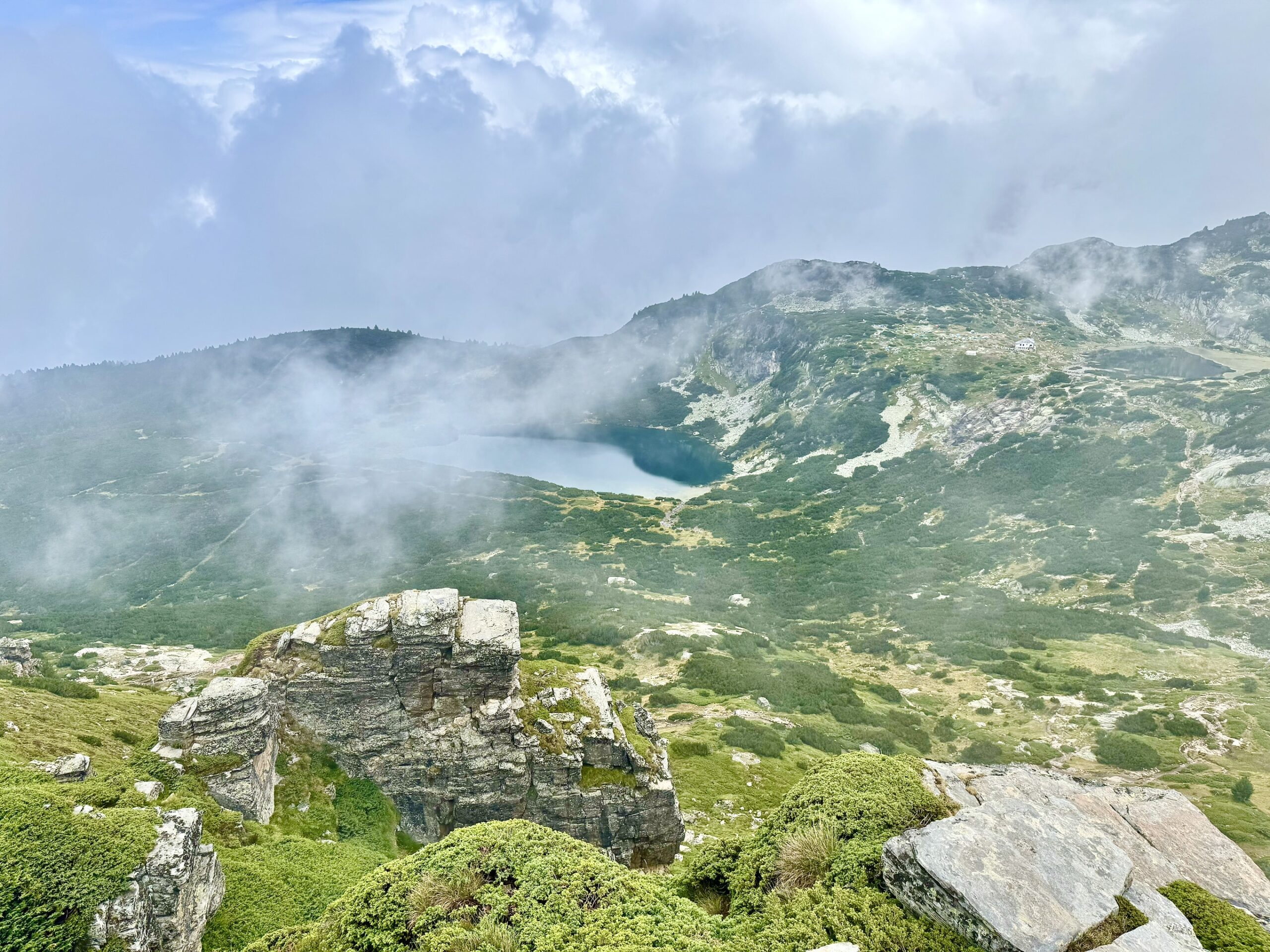The Seven Rila Lakes are marketed as Bulgaria‘s must-see natural wonder, but what happens when you arrive to find them wrapped in thick fog and pouring rain? Read on for our firsthand experience and whether it’s worth tackling these famous lakes when the weather forecast looks less than ideal!
Quick Facts
- Location: Rila Mountains, ~90 km (~56 mi) south of Sofia
- Elevation: 2,100m – 2,500m (6,900ft – 8,200ft) (lakes level)
- Season: July-September (lifts operating)
- Time needed: 4-6 hours (full loop in good weather)
- Our time: 2 hours (weather cut short)
- Cost: ~30 BGN (~$18 USD) per person lift + 5 BGN (~$3 USD) parking
- Difficulty: Moderate (when you can see the trail)
Truth be told, the weather wasn’t exactly stellar on that Tuesday morning in August when we woke up in Sofia: the glorious sunshine of previous days had given way to overcast skies. Of course, that didn’t necessarily mean bad weather would follow us to the mountain destination about 90 kilometers (56 miles) south of the capital, and honestly, we wouldn’t have minded temperatures a bit cooler than the heat we’d experienced – that would actually make hiking more pleasant.
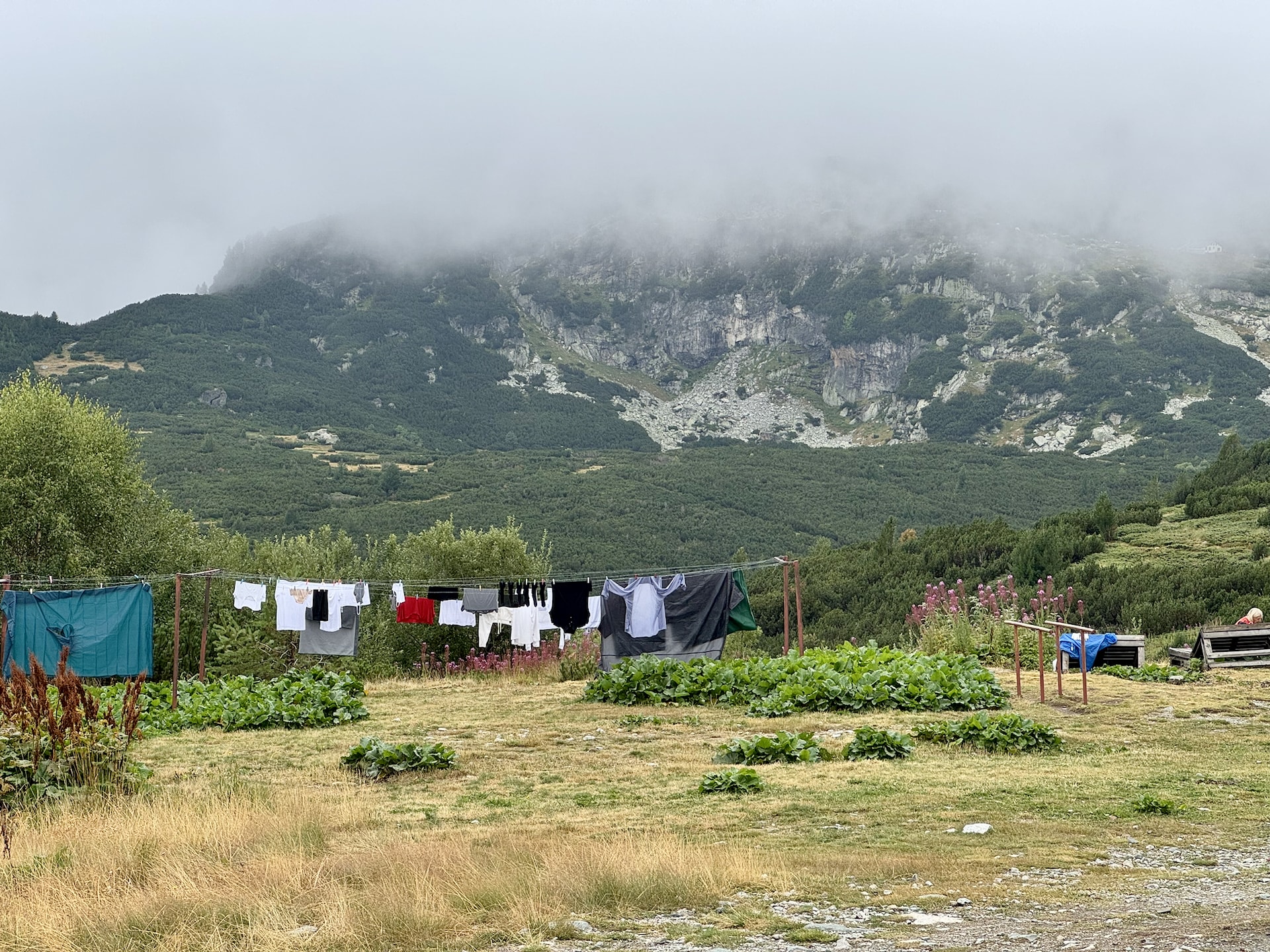
Then, as we cruised down the A3 highway, we found ourselves driving from one storm cell straight into another, and we began seriously worrying about what weather awaited us. Fortunately, by the time we reached the town of Sapareva Banya, the rain had stopped, and though it remained cloudy and foggy, the signs looked promising. Even the mountain serpentine road went smoothly, right up until the moment we arrived at the lower parking lot. That’s when the sky absolutely opened up, leaving us facing quite a dilemma: after two hours of driving, what on earth should we do now?
Seven Rila Lakes: Bulgaria’s Alpine Jewels
Before diving into what we ended up doing, let’s explore what the Seven Rila Lakes actually are! Nestled in Bulgaria’s Rila Mountains between 2,100 and 2,500 meters (6,890-8,200 feet) elevation, the Seven Rila Lakes form one of the Balkans’ most spectacular glacial landscapes – and for good reason. These pristine alpine lakes, carved by ancient glaciers during the Ice Age, cascade down the mountainside like natural amphitheaters, each with its own distinct personality and Bulgarian name reflecting its characteristics: Salzata (The Tear), Okoto (The Eye), Babreka (The Kidney), Bliznaka (The Twin), Trilistnika (The Trefoil), Ribnoto (The Fish Lake), and Dolnoto (The Lower Lake). Connected by small streams and waterfalls, the lakes create a hiking circuit that draws thousands of visitors each summer, offering everything from easy two-hour strolls around the lower lakes to challenging full-day treks that take in all seven bodies of water plus surrounding peaks that scratch 2,700 meters (8,860 feet).
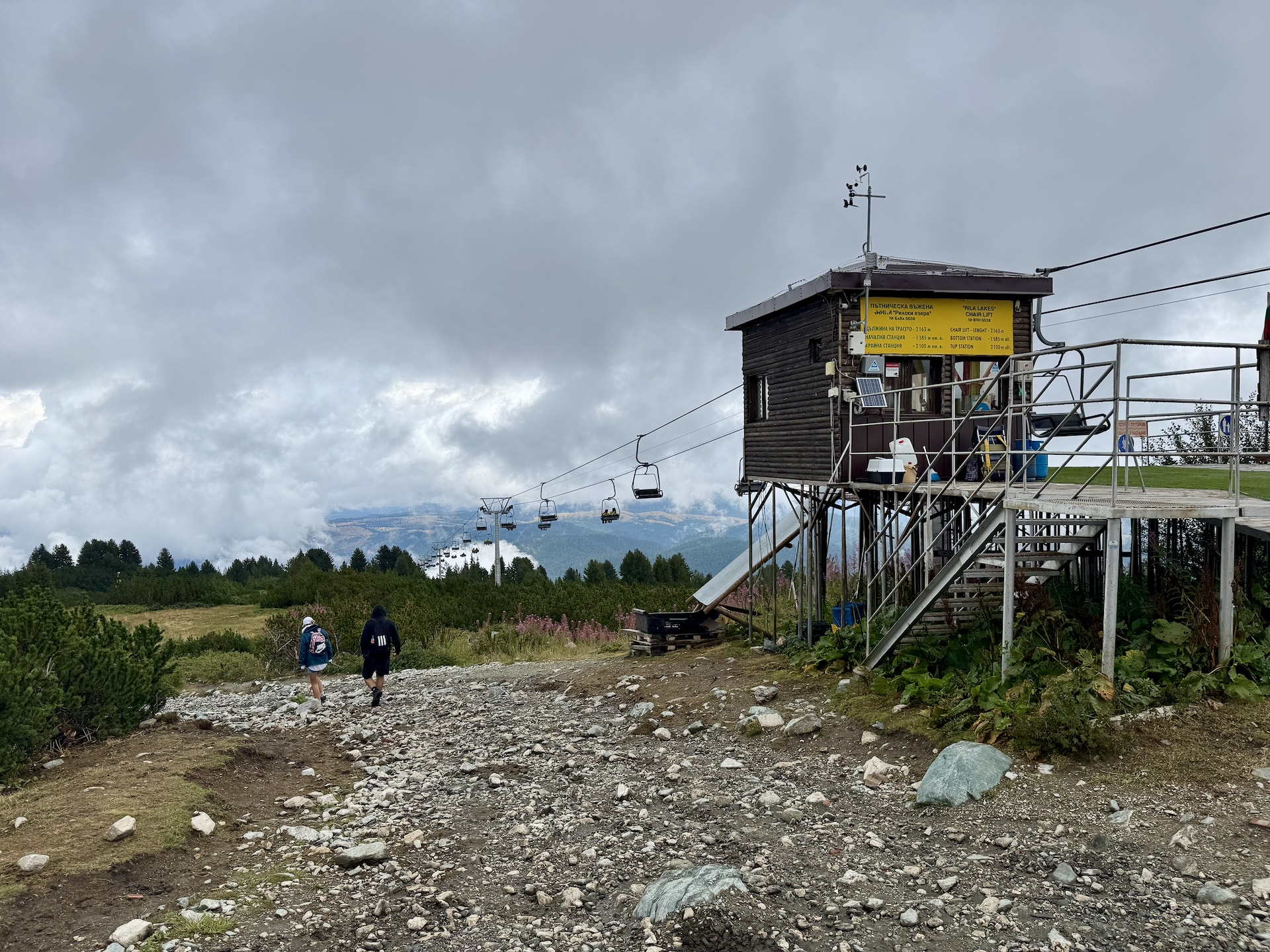
The lakes’ popularity has grown exponentially since a chairlift was installed from near Pionerska Hut in the 1990s, transforming what was once a grueling 3-hour uphill slog into a scenic 30-minute ride that puts you within easy reach of the first lake. On a clear day, the setting is (supposedly) genuinely jaw-dropping: crystal-clear waters reflecting jagged peaks, wildflower meadows in full summer bloom, and views that stretch across much of the Rila range. It’s the kind of place that sells Bulgaria on countless tourism posters and Instagram feeds, regularly listed as a “must-do” day trip from Sofia, and for those lucky enough to catch it in good weather, it absolutely lives up to the hype. But what’s it like when Mother Nature doesn’t cooperate with your carefully planned itinerary?
How to Get to Seven Rila Lakes from Sofia
Driving to Seven Rila Lakes: The Most Flexible Option
The lakes are located roughly 90 kilometers (56 miles) south of the capital. We planned to spend most of the day here, then continue our Bulgarian circuit toward Plovdiv, so we came by car. We’d arranged to pick up our rental on the last day of our Sofia sightseeing – that very morning. Since the rental office (Sixt Downtown Sofia) opened at 9 AM, we couldn’t have left earlier anyway – though we ended up departing about half an hour later than that because the car pickup process wasn’t exactly smooth.
We chose the A3 highway (since our car came with a highway vignette), which, while adding a few extra kilometers compared to Route 181, is significantly faster. Actually, any road leaving Sofia southward eventually merges onto Route 62, which takes you to the town of Sapareva Banya, from where you head up the mountain serpentine! In our case, the journey took around two hours in rain, bringing us to the parking lot near Hizha Pionerska (Хижа Пионерска).
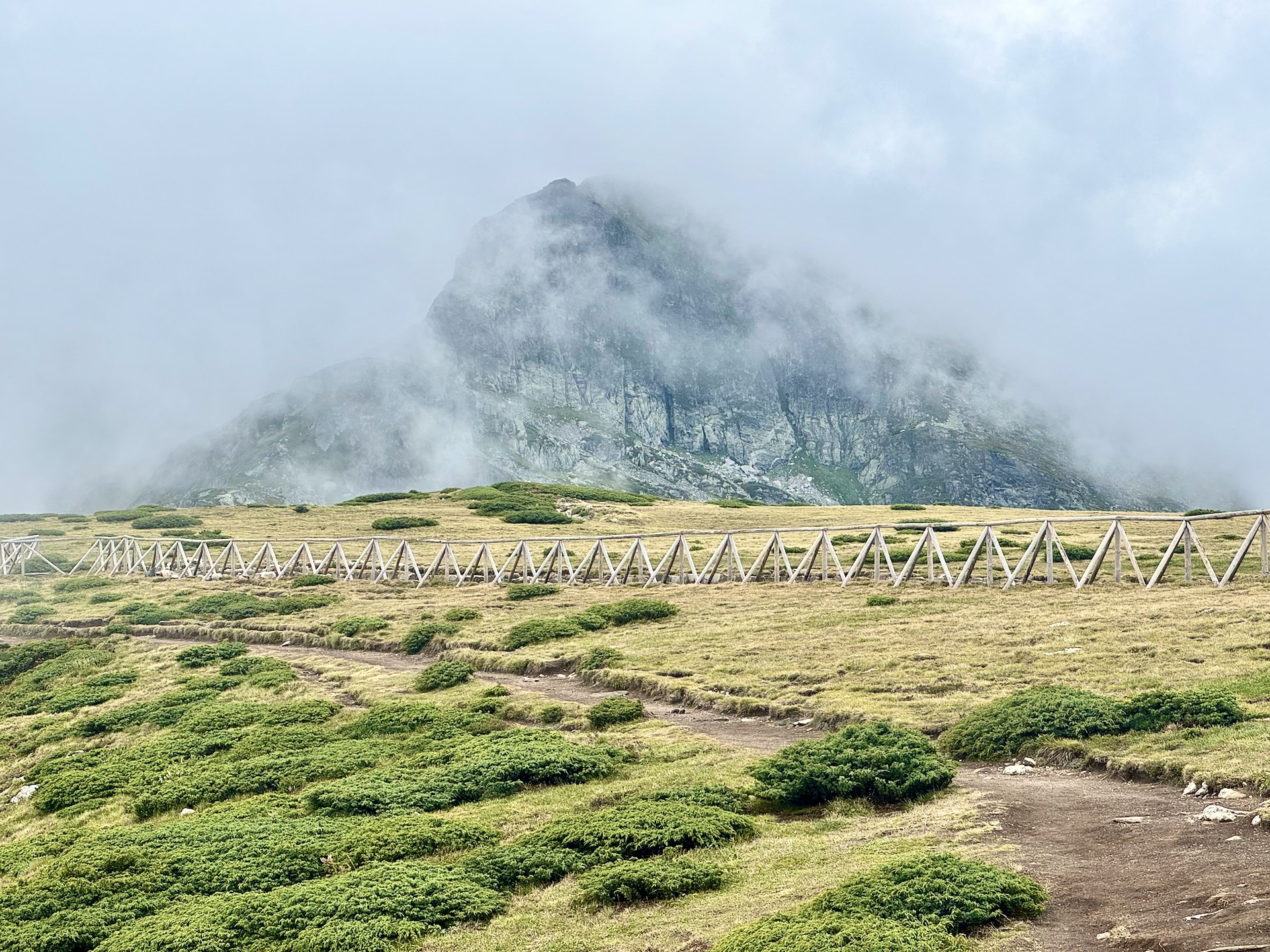
Despite the (still only relatively) poor weather, the parking lot was packed – so much so that cars were already lining the roadside well before the entrance. We drove all the way until we encountered the parking attendant, who directed us where to park and collected the 5 BGN daily parking fee. Overall, getting there by car was problem-free and quite straightforward.
If driving from Sofia, fill up your gas tank before leaving the city. While there are gas stations along the route, prices increase as you approach the mountains.
Taking the Bus from Sofia to Rila Lakes
We considered the bus earlier on, but ultimately, given our circumstances, renting a car was more convenient. As for bus connections, the situation isn’t exactly rosy. We found a company called Traventuria online (they’re a tour operator, but Google Maps also suggests them for public transport). During peak season, they operate one daily round-trip to the chairlift for around 80 BGN (~$48 USD) total. The bus departs at 7 AM from the Vasil Levski Monument, with the return trip leaving at 5:30 PM.
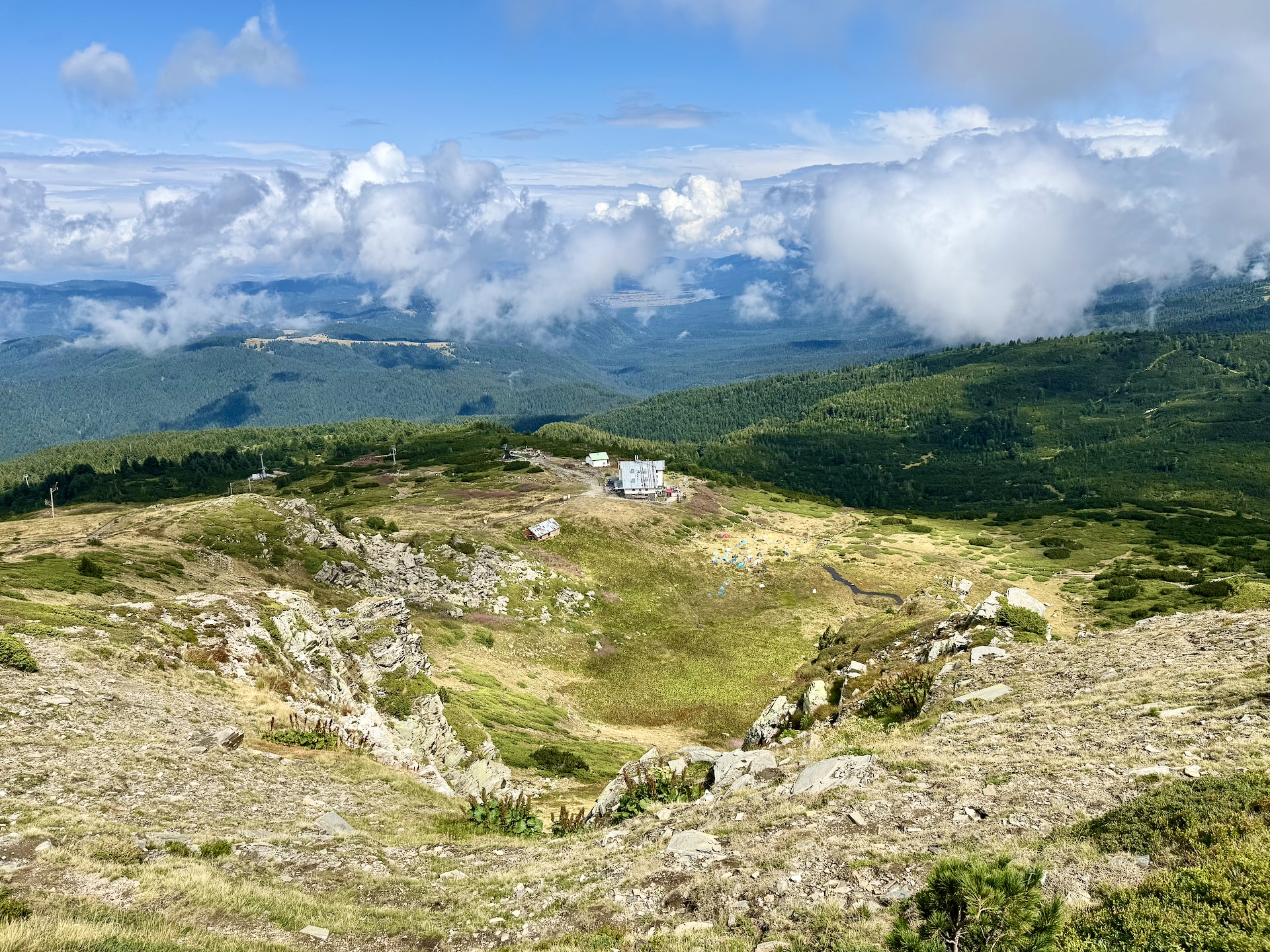
This means you’ve got roughly 8.5 hours if you take the bus, which allows for a comfortable pace even for the full loop hike (the chairlift ride adds about an hour round-trip). If you miss the bus, though, catching a taxi or hitchhiking becomes quite a hassle. That said, hitchhiking seems relatively popular – two guys even tried to flag us down on our way back down the mountain. We would have given them a ride, except we weren’t heading to Sofia. So, keeping all this in mind, decide for yourself whether the bus works for you!
Seven Rila Lakes Day Tours and Guided Hikes
Several organized paid day trips are available from Sofia, since the Seven Rila Lakes are quite close to the capital. It’s important to note, however, that most options we found on GetYourGuide are actually just transfer services – meaning they include transportation there and back, but no guide for the actual hiking. Prices hover around $35-40 USD. (Interestingly, the Traventuria option mentioned above also appears here, slightly cheaper than booking directly through them.) There are also versions that include a stop at Rila Monastery (which we unfortunately didn’t see), and these run a bit more expensive.
Guided tours with additional extras can be found on Tripadvisor. There are also multi-day, genuinely guided treks available if you want to explore Rila National Park more thoroughly. These can last up to a week, hiking from hut to hut (or camping). Companies like Azimut Tours and the aforementioned Traventuria offer such experiences.
Hiking Seven Rila Lakes in Rain and Fog: Our Experience
We arrived at the parking lot around 11:30 AM. Almost the exact moment we paid the parking fee, the sky opened up, and it started raining far harder than before. We sat in the car for about half an hour, debating what on earth we’d do, and finally decided to walk (more like run) the hundred meters or so to Malka Yurta Hut (Хижа Малка юрта) to grab something to eat – maybe by then the weather would improve.
The service at the hut was rather odd. We’d probably still be sitting at one of the tables waiting for food if one of the many staff members (or so we assumed) walking past us hadn’t finally taken pity and informed us that we needed to order at the counter outside. After a rather forgettable (and lukewarm) bean soup, the weather cleared enough (the sun even peeked out a bit!) that we decided to tackle the mountain.
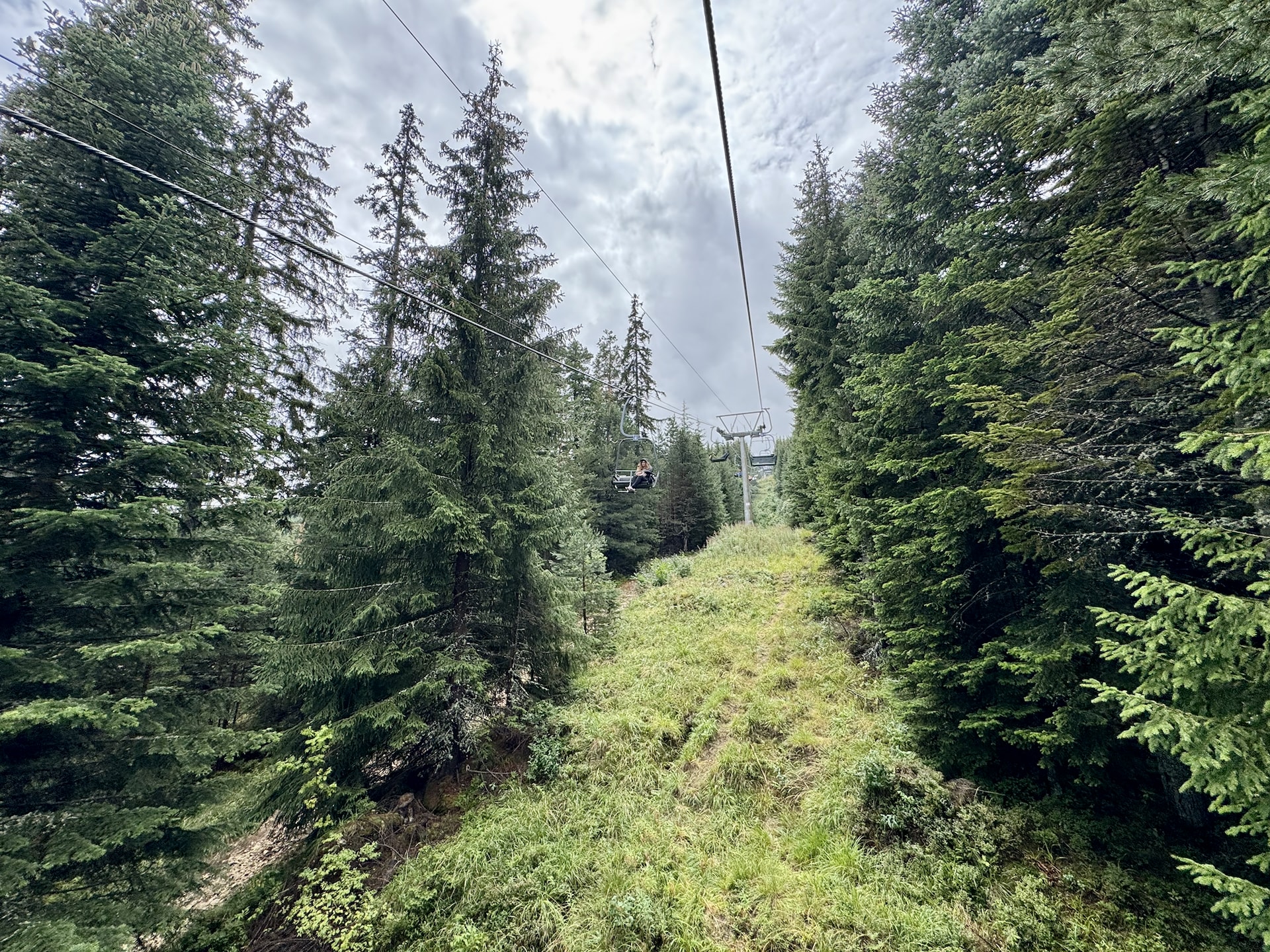
Our journey first took us from the car to the chairlift station, located about 500 meters (1,640 feet) away. We purchased round-trip tickets for 30 BGN (~$18 USD) per person, then hopped on the chairlift around 12:45 PM. Going up, nobody was waiting in line, and we didn’t see anyone coming after us either, since it was already quite late in the day. Coming down, however, was completely packed – I suspect they’d stopped the lift during the storm, so everyone on the mountain wanted to descend at once. It’s worth noting that if it’s raining, the seats get soaking wet, so it’s smart to lay down something waterproof. Otherwise, your pants will be completely drenched by the end of the roughly half-hour ride, as mine were. We passed by loads of – literally – weather-beaten people on our way up to the top station, where a significant crowd was still queuing for the descent.
The chairlift doesn’t operate in severe weather conditions (lightning, high winds). If you’re already at the top when they stop service, you might need to hike down on foot, which takes 2-3 hours. Check the weather forecast carefully before committing to the ascent, especially if afternoon storms are predicted.
At the upper station, you’ll find the Rila Lakes Chalet (Хижа Рилски езера), where you can eat, drink, and use the paid restroom – and of course, you can stay overnight if you’re planning multiple days (a bed in a dorm room starts at 40 BGN (~$24 USD) per night, while a double room with private bathroom runs 130 BGN (~$78 USD)). This is also where the complete Seven Rila Lakes loop trail begins. Originally, we planned to hike the entire circuit.
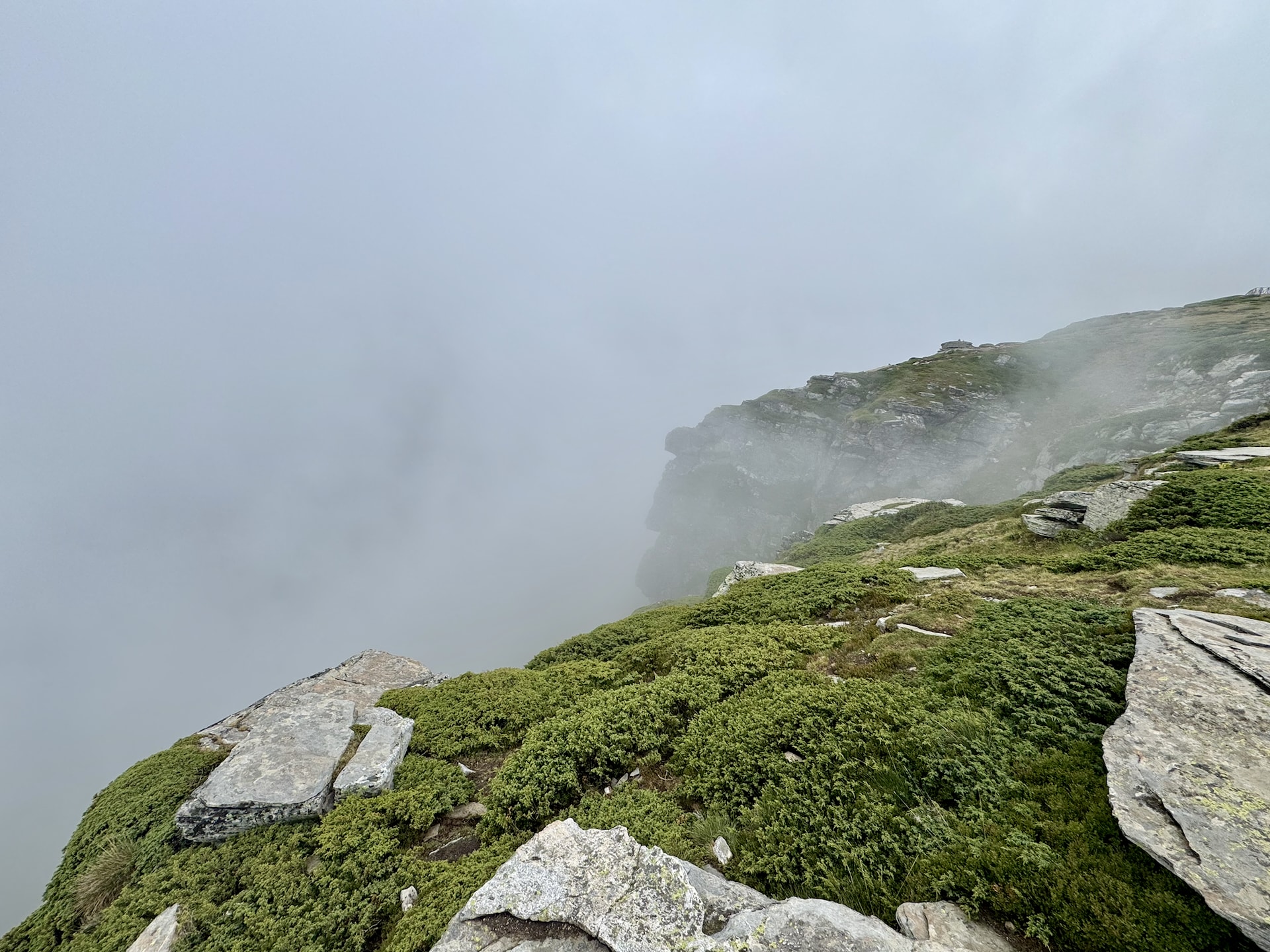
Unfortunately, visibility wasn’t exactly ideal. The rain had thankfully stopped, and it wasn’t particularly cold, but at times we could barely see past our noses as the entire mountain wrapped itself in a thick blanket of clouds. Still, we hiked for a bit, entertaining ourselves by taking photos of the “stunning” views. I have to admit, though, it’s worth coming up even in weather like this, because while you won’t get those postcard-perfect vistas you see on Instagram, there’s a distinctive atmosphere to peaks and trails shrouded in fog.
The trail quality itself is mixed. At the start, you need to climb a fairly rocky, boulder-strewn incline, and the path remains similar throughout. At some point, the concept was probably to pave the designated route with stones, but these are so awkward that most people walk alongside the official trail (I’ll confess, I’m guilty of this too). This, however, generates serious erosion, as is pointed out on signs in several locations.
When we were there, we encountered hardly anyone else on the trail – this was mainly due to both the bad weather and our late start. Of the full 8-9 kilometer (5-5.6 mile) loop, we managed to cover only 1.5-2 kilometers (0.9-1.2 miles) before calling it quits, reasoning that we weren’t going to see anything today, and besides, the rain could start up again any minute. So we turned back. Needless to say, not long after, the clouds partially dispersed and the sun almost came out, so we jogged back to a point where we could at least somewhat see three of the lakes (Dolnoto, Ribnoto, Trilistnika), snapped a few photos, and headed down.
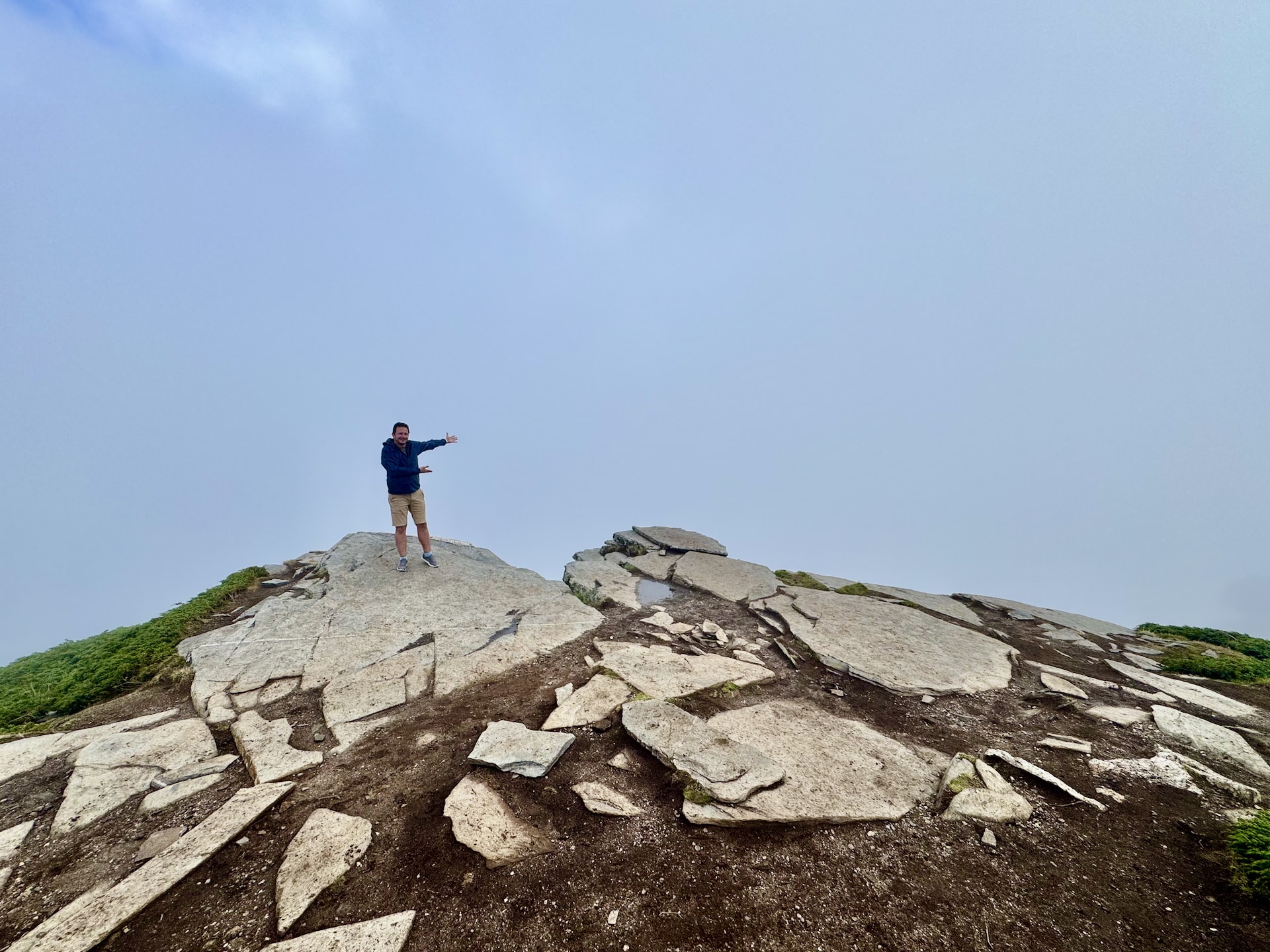
On the way down, we grabbed some chocolate and sugary drinks at the chalet, then descended via the chairlift just as we’d come up – practically alone on the entire line. As we descended, we passed industrial quantities of toilet paper heading up on the chairlift, which was fortunate given that the lodge’s restrooms left much to be desired and had no paper when I used them. Not counting the chairlift rides, we spent a total of about two and a half hours on the mountain.
So is it worth going up to the Seven Rila Lakes in bad weather? If your schedule is as packed as ours (meaning you can’t reschedule the visit for another day), then I’d say absolutely yes. You won’t get the same views you originally came for, but the trail is still quite beautiful even in fog and clouds, and in exchange, you’ll encounter far fewer crowds than on a day with perfect weather. (Naturally, weekends are also much busier than weekdays – we went on a Tuesday.) That said, it’s worth keeping in mind that in bad weather, the trail can be muddy and slippery, and while we were sitting in the car, we read some rather alarming horror stories about what it’s like being up there when a serious storm with lightning actually hits the mountain – if the forecast shows that, I’d recommend skipping the Seven Rila Lakes loop altogether.
Mountain weather can change rapidly at this elevation. Even if it’s sunny when you start, pack a waterproof jacket and extra layers. Be prepared for the 15-20°C (27-36°F) temperature drop from Sofia in the summer.
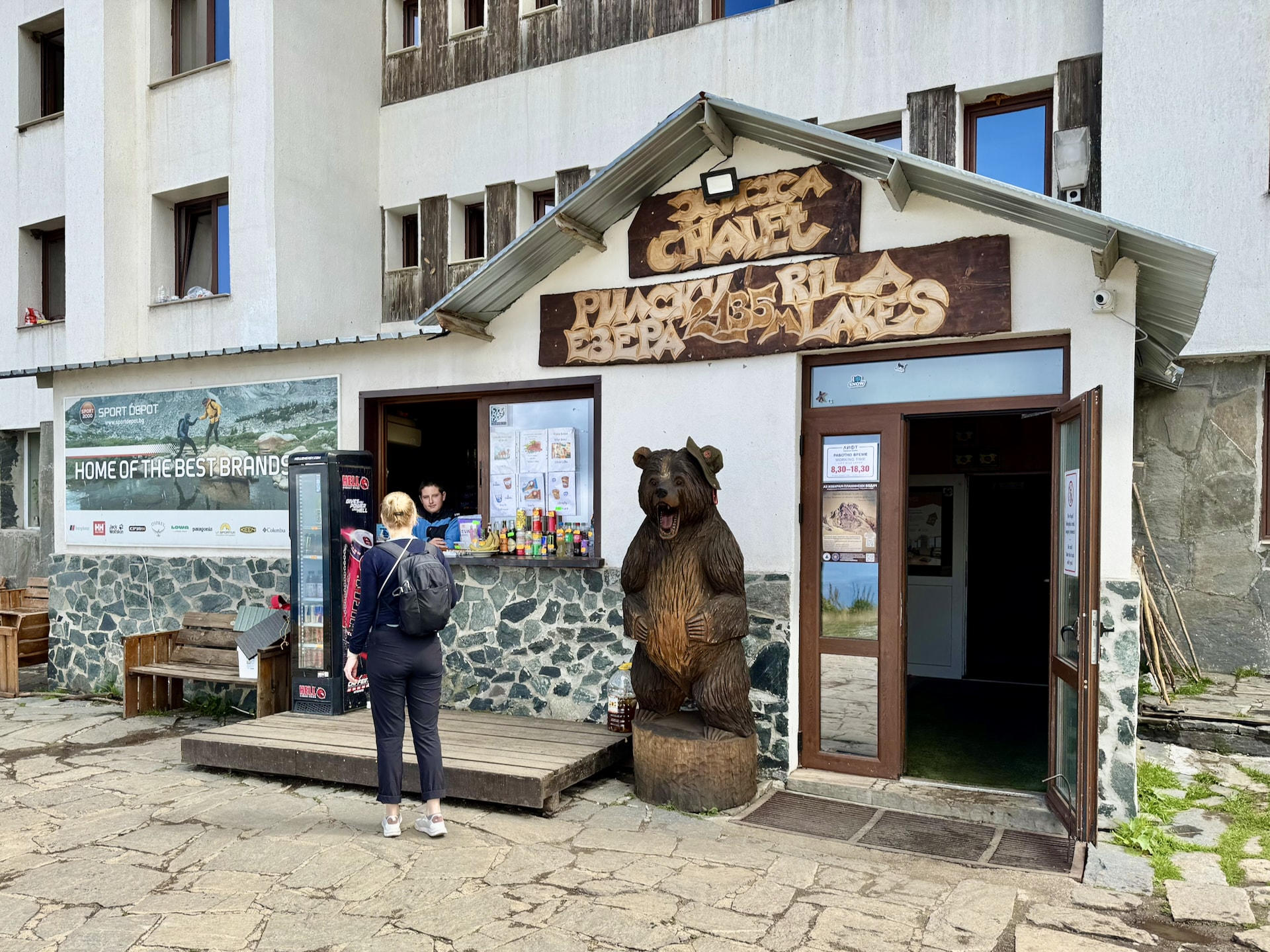
Seven Rila Lakes Trail in Good Weather
I’ll also describe what we originally planned and what the Rila Lakes hike is like based on descriptions, in case you have better luck with the weather. On various platforms (like AllTrails or Wikiloc), you’ll find routes of 8-9 kilometers (5-5.6 miles), rated as difficult on both sites.
The starting point is at the lodge mentioned above (around 2,100 meters/6,890 feet), from where you first need to reach the ridge via a not-too-challenging climb (we managed this part), followed by a flatter section, and then comes the ascent of 2,559-meter (8,396-foot) Ezeren Peak with slopes reaching 50% grade in places – quite steep. The total elevation gain along the entire route is approximately 540 meters (1,770 feet), and at a comfortable pace with stops (for photos, restrooms, eating), it takes 5-6 hours to complete.
Along the way, you’ll see all seven lakes:
- Salzata (The Tear) – highest and clearest
- Okoto (The Eye) – deepest, oval-shaped
- Babreka (The Kidney) – largest
- Bliznaka (The Twin) – connected lakes
- Trilistnika (The Trefoil) – irregular shape
- Ribnoto (Fish Lake) – shallowest
- Dolnoto (Lower Lake) – lowest elevation
The route passes in close proximity to nearly all the lakes, with only Dolnoto falling a bit farther from the main trail. As far as we got, the path was clearly marked and visible throughout, with occasional information boards that would tell you what you’d be seeing – if thick fog didn’t blanket the entire area. Since this is an extremely popular route, getting lost is highly unlikely. About three-quarters of the way, near Ribnoto, you’ll find the Seven Lakes Hut (Хижа Седемте езера), where you can eat, drink, and use the restroom.
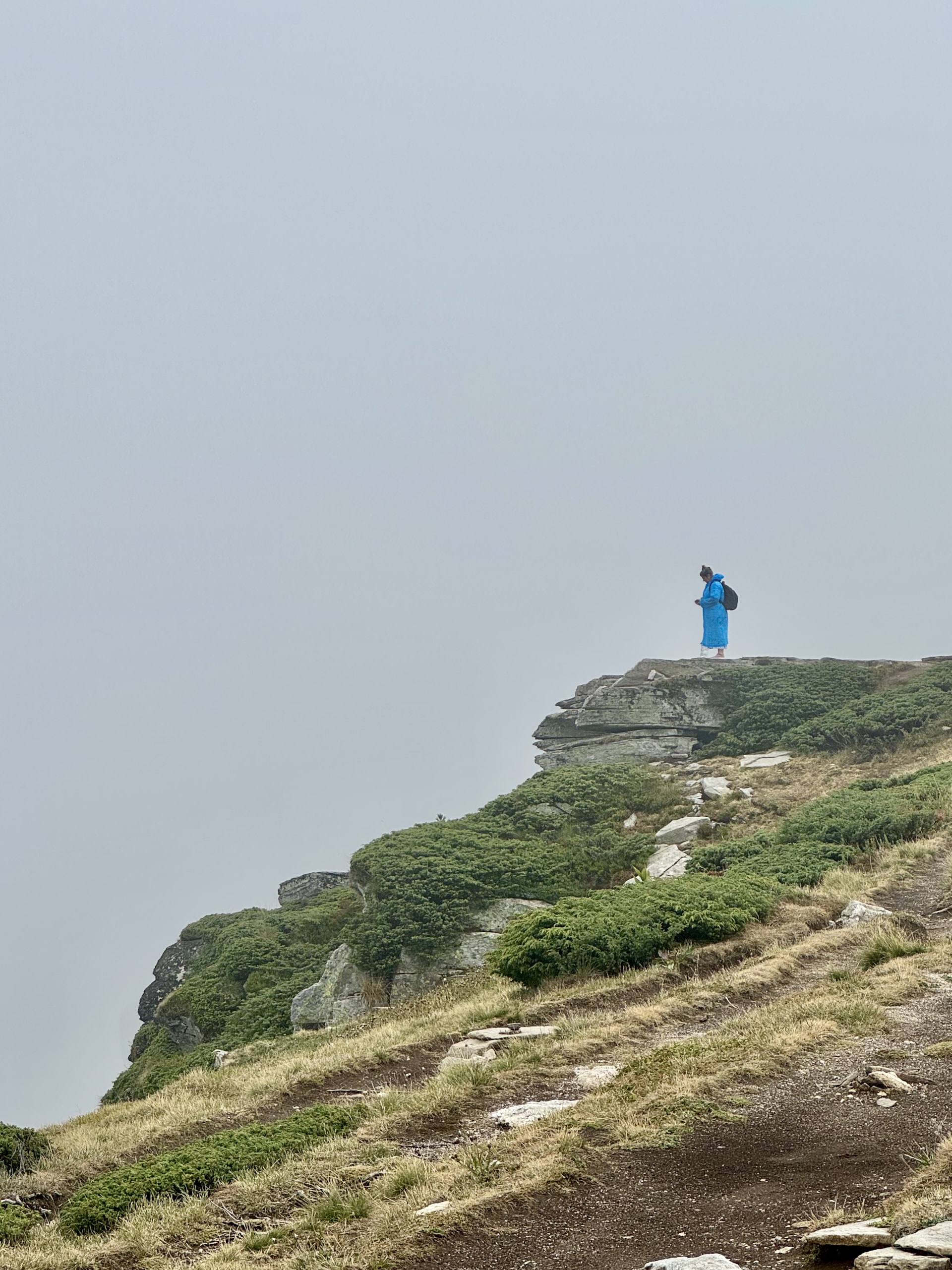
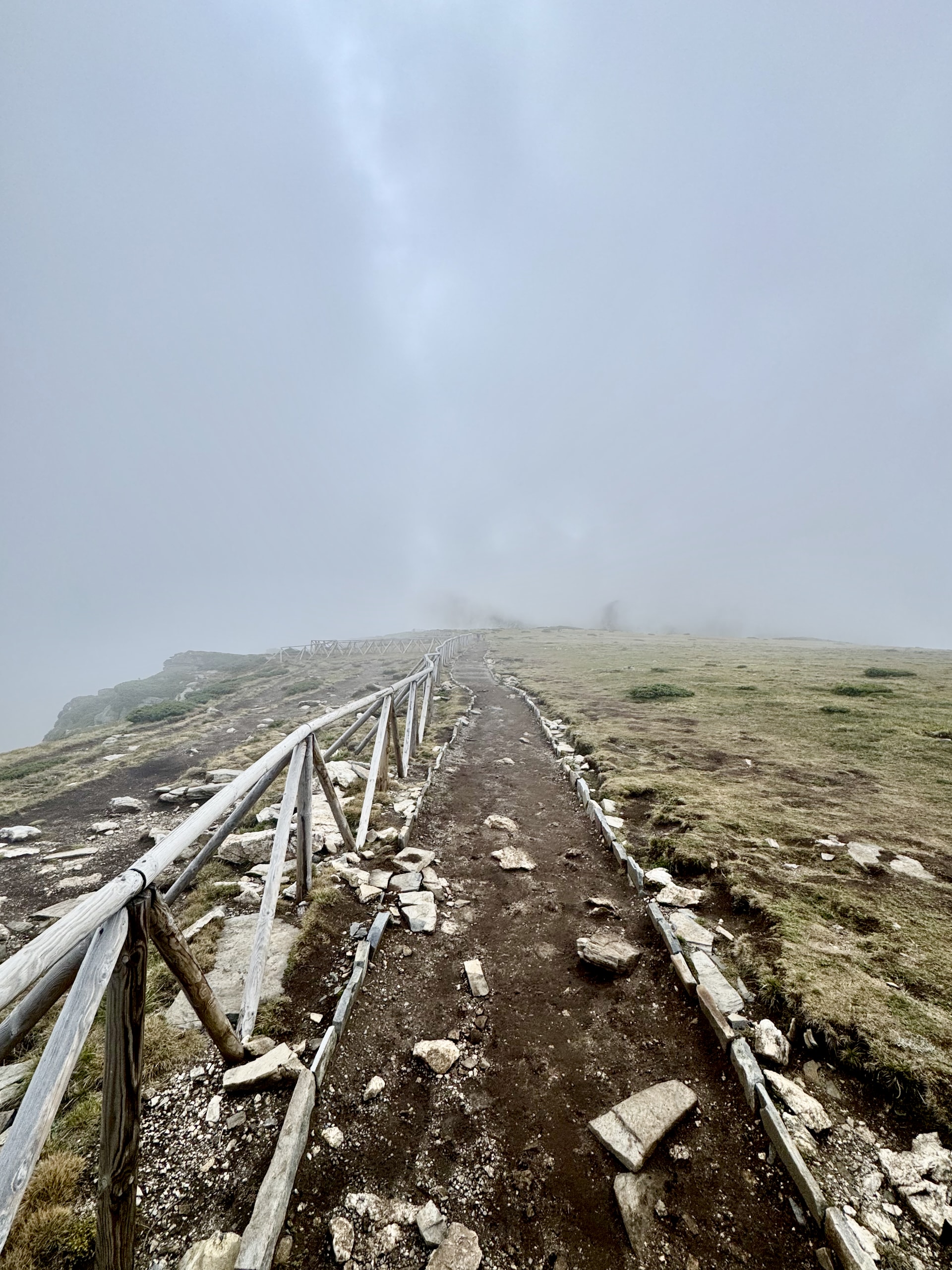
Shorter Routes and Alternative Seven Rila Lakes Hikes
The route can actually be shortened (and made significantly easier) in several ways:
- Skip climbing Ezeren Peak and turn toward Bliznaka instead – this cuts 2 kilometers (1.2 miles) and about 250 meters (820 feet) of elevation gain.
- You can also start in the reverse direction of the linked routes and head to the lower lakes or Seven Lakes Hut as a roughly 4-kilometer (2.5-mile) round-trip easier hike.
- And of course, you can do what we did: start on the “regular” route, hike as far as you feel comfortable, then turn back – from the ridge in good weather, three lakes are visible, and around 2.5 kilometers (1.6 miles) in, you’ll reach the largest lake, Babreka.
What to Pack for Seven Rila Lakes Hiking
Obviously, you should prepare with plenty of water, some snacks, and a warmer layer of clothing, as temperatures on the mountain can be 15-20°C (27-36°F) cooler than in Sofia. For footwear, definitely choose some type of closed shoe – ideally hiking boots/shoes or trail runners (sandals or flip-flops are not an option). If the sun is shining, use sunscreen regularly, as the altitude means you can burn faster in good weather. If I remember correctly, both the chairlift station and the huts accepted card payments, but we brought cash just to be safe (and parking and restrooms can only be paid in cash anyway).
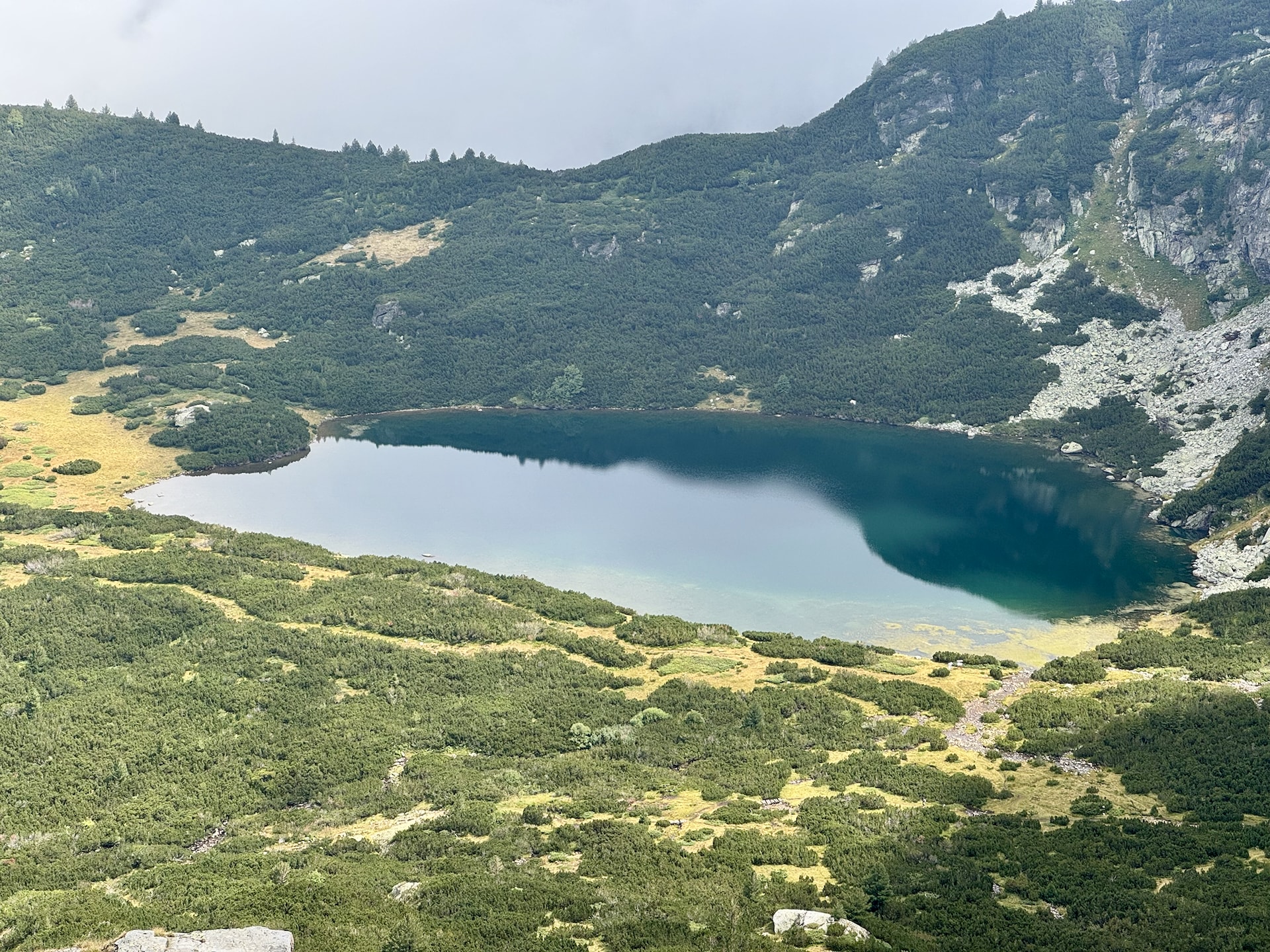
Download offline maps before you go. Cell signal can be spotty on the mountain, and while the main trail is well-marked, having GPS backup on your phone provides peace of mind – just make sure your battery is fully charged before starting (or bring a power bank).
Seven Rila Lakes Cost: Complete Budget Breakdown
Here’s a quick summary of the expenses you can expect if, like us, you’re traveling as a couple by car:
| Item | Cost (BGN) | Cost (USD) | Notes |
|---|---|---|---|
| Parking | 5 | 3 | All day, per car |
| Chairlift | 30 | 18 | Round trip, per person |
| Gas from Sofia | ~35 | ~21 | Round trip, per car |
| Food/drinks | 15-20 | 9-12 | If buying at top |
| Total per person | ~70 | ~40 | Based on two people |
Final Thoughts: Should You Visit Seven Rila Lakes in Bad Weather?
After our fog-shrouded adventure at the Seven Rila Lakes, here’s the honest bottom line: yes, it’s absolutely worth visiting even when the weather isn’t cooperating – but with some important caveats.
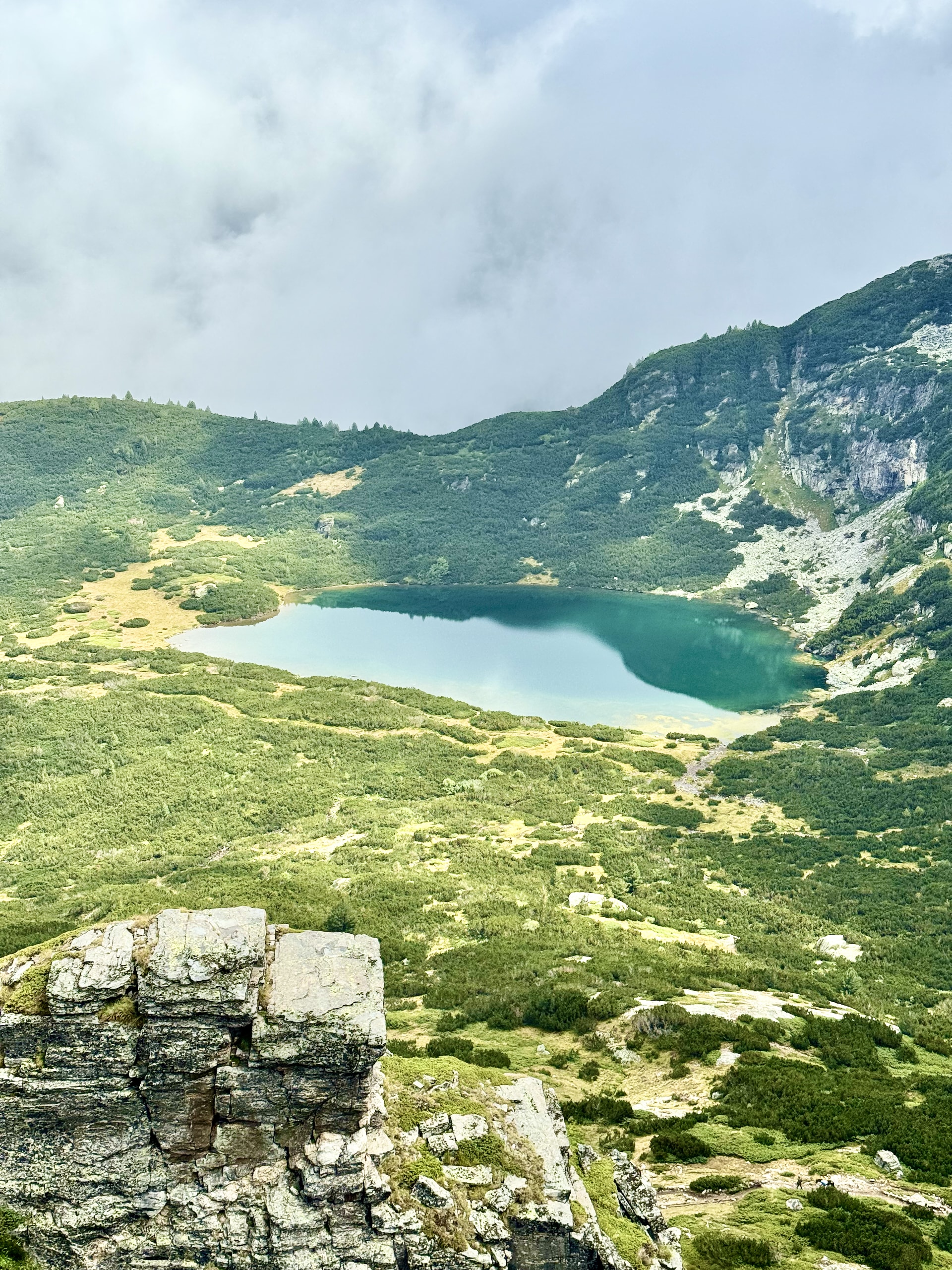
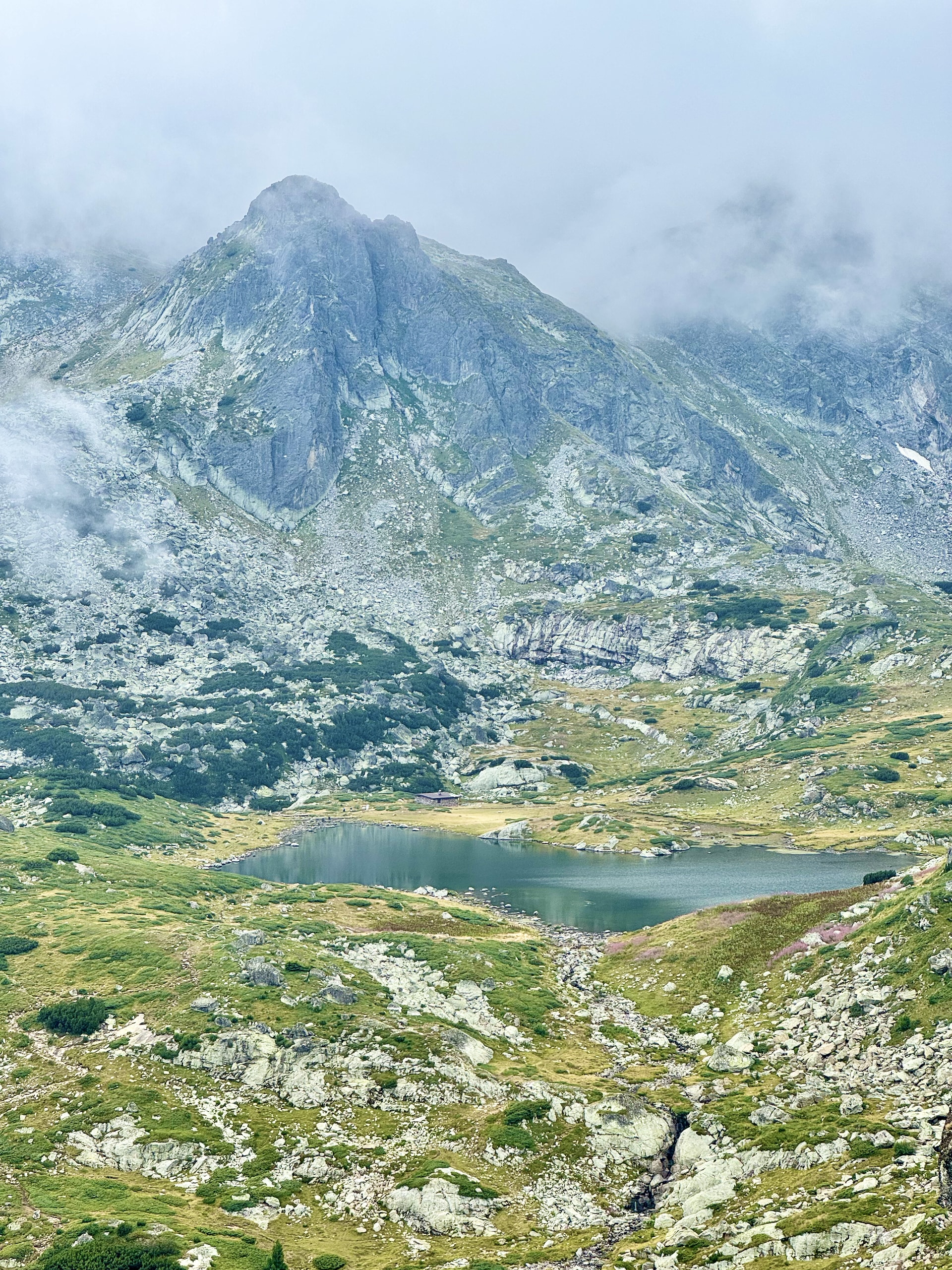
Go if:
- Your schedule is tight and you can’t easily return another day
- You’re okay with atmospheric fog and mist instead of crystal-clear panoramas
- You appreciate the quieter experience that bad weather brings (we barely saw anyone on the trail)
- You’re prepared with proper waterproof gear and warm layers
- The forecast shows clouds and rain, but not severe storms with lightning
Skip it if:
- Lightning storms are predicted – mountain exposure makes this genuinely dangerous
- You’re solely coming for Instagram-worthy photos – you’ll be disappointed
- You’re not prepared for muddy, slippery conditions on the trail
- The chairlift is closed due to weather (check before driving all the way there)
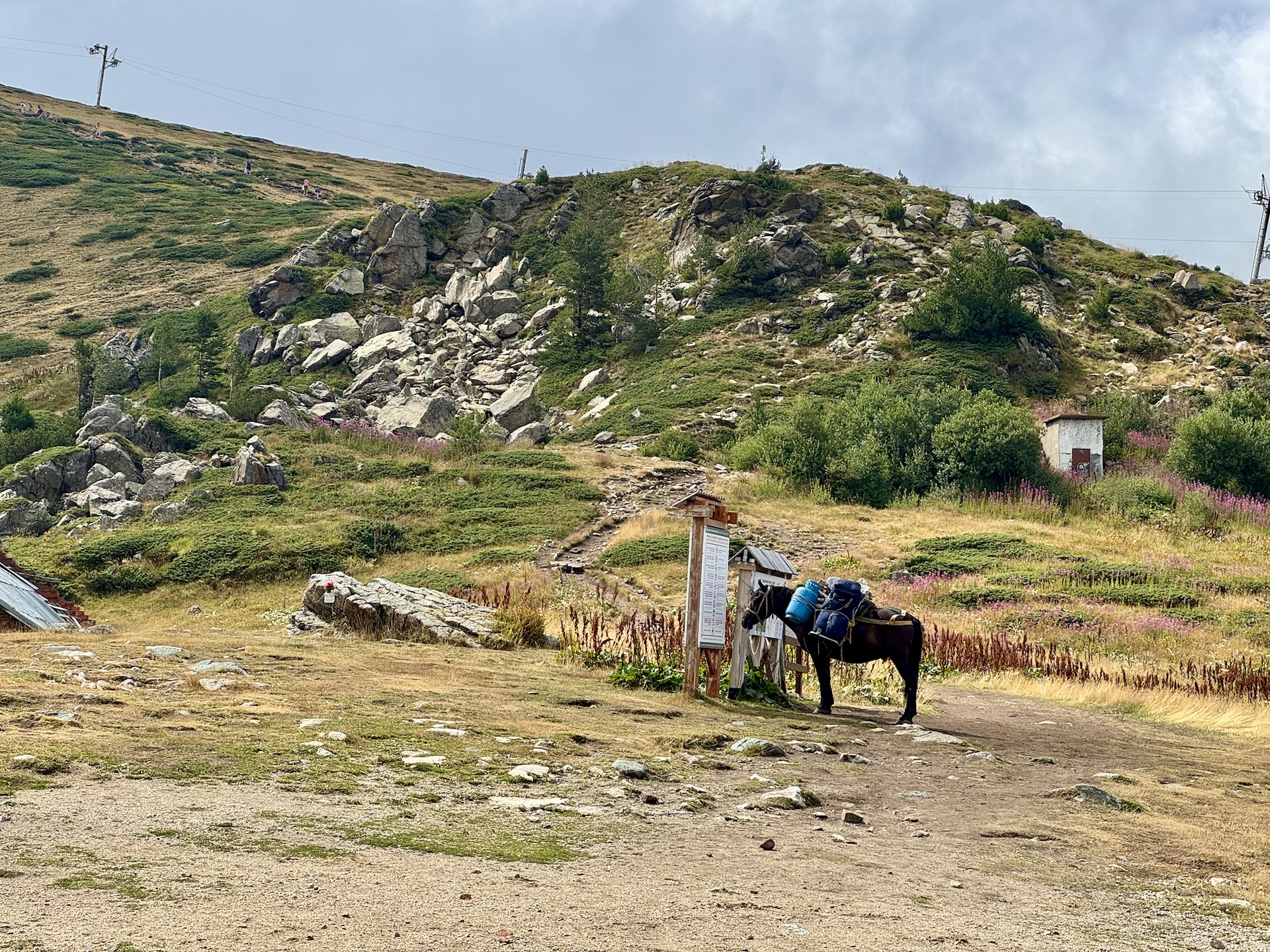
Our abbreviated two-hour hike gave us a taste of the Seven Rila Lakes’ haunting beauty even when wrapped in clouds. While we missed the famous postcard views, we gained something else: an intimate, almost mystical experience of these ancient glacial lakes emerging from the mist, and the entire mountain practically to ourselves. The atmospheric conditions created their own kind of magic – just a different one than the guidebooks promise.
If you do have the flexibility to choose your day, obviously aim for clear weather between July and September. But if you’re like us, working with a fixed itinerary through Bulgaria, don’t let a gray forecast keep you away. Just pack that rain jacket, lower your expectations for sweeping panoramas, and embrace whatever the Rila Mountains decide to show you. Sometimes the unexpected weather makes for the most memorable stories – and after all, isn’t that what travel is really about?
